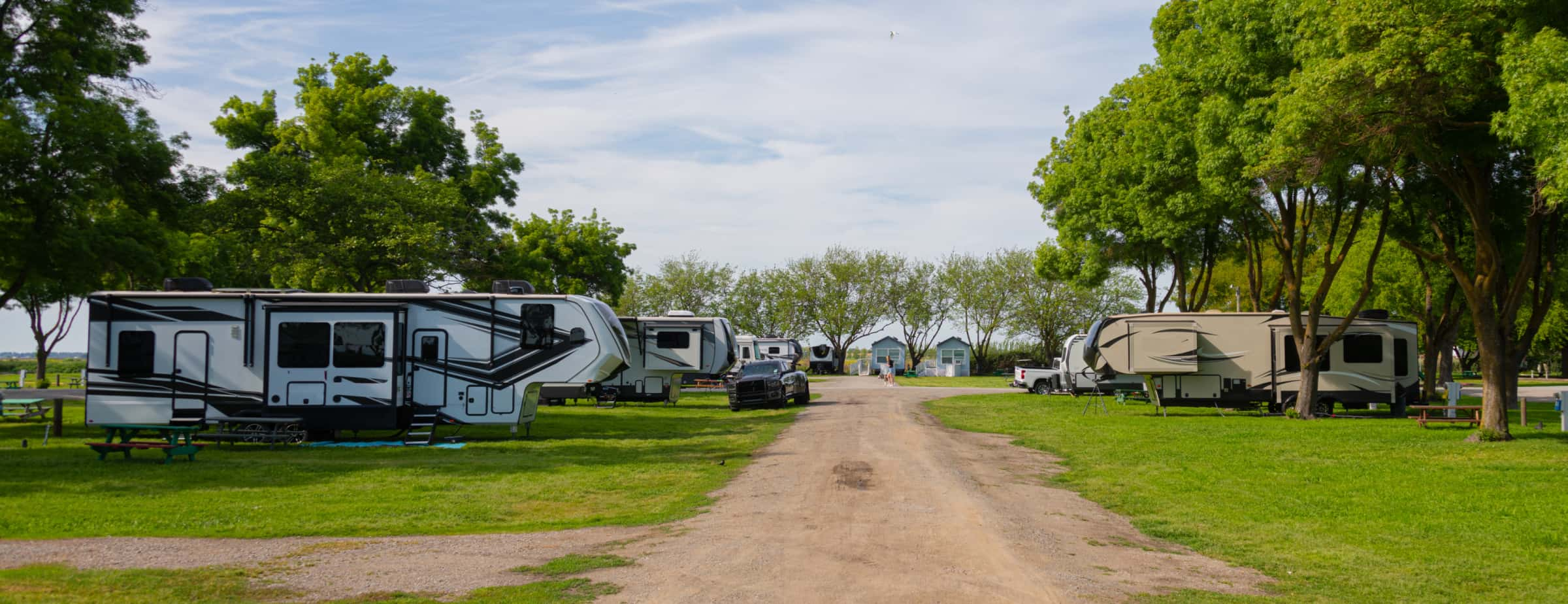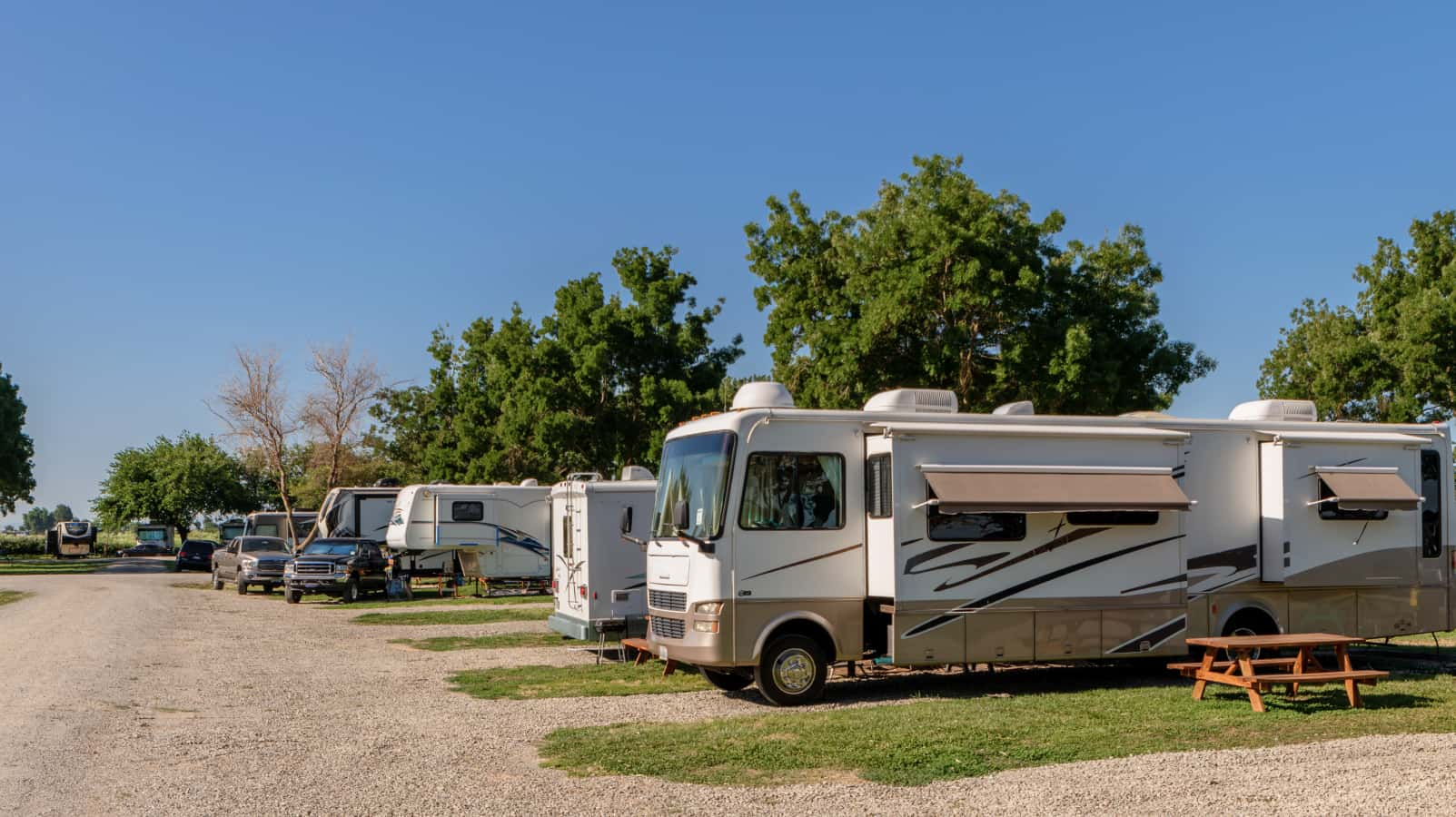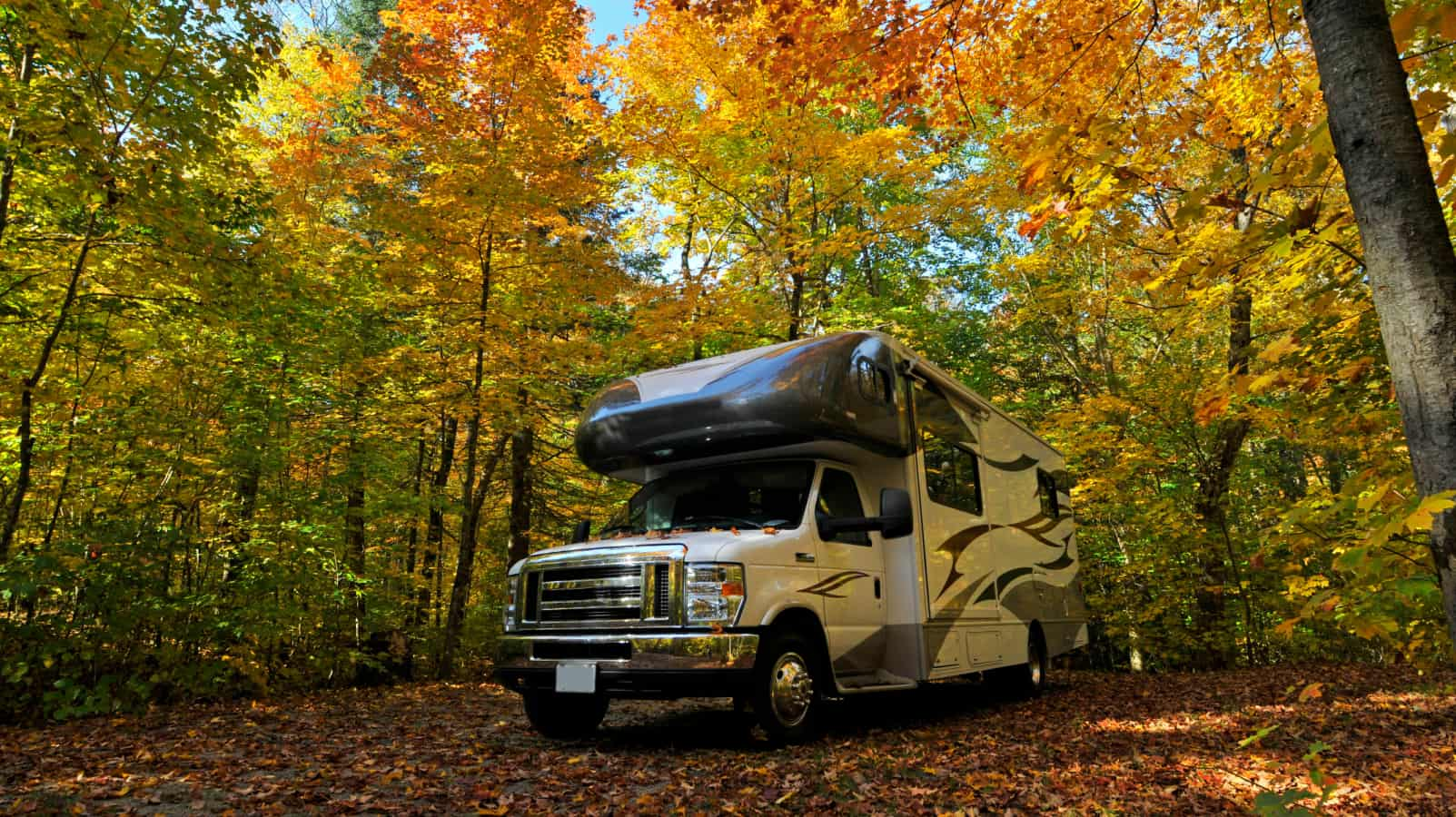RV travel and destinations
RV Park Costs: Ultimate Guide to Budget-Friendly Camping
Posted on August 26, 2024

Wondering how much it costs to stay at an RV park? Knowing RV park costs is essential for budgeting your trip effectively. This guide covers the main factors that impact the cost, types of RV parks, and additional expenses you might encounter. Let’s explore these aspects to help you plan a cost-effective RV adventure.
Looking to book an RV campground? View available RV parks near you.
Key Takeaways
- RV park costs are influenced by key factors such as location, demand, amenities, and seasonal variations, which impact nightly rates.
- Different types of RV parks—including public, private, luxury resorts, and national park campgrounds—offer varying pricing structures and experiences.
- Budgeting for RV park stays involves calculating daily, weekly, and monthly rates, considering additional costs, and exploring money-saving strategies like membership programs and off-season travel.
Key Factors Influencing RV Park Costs

Understanding the factors that drive RV park costs is crucial for any RV owner. The prices you encounter can fluctuate based on a myriad of factors, each playing a significant role in the total camping costs.
Here are some key factors that contribute to the overall cost of your stay:
- The allure of a prime location
- The draw of luxurious amenities
- Seasonal demand and pricing
- Length of stay
- Type of RV site (e.g., full hookup, partial hookup, tent site)
Awareness of these elements helps in making informed decisions and managing your budget more effectively.
The primary factors influencing RV park costs include location and demand, amenities and services, and seasonal variations. Understanding the impact of each factor on pricing aids in planning your RV trip more efficiently. Let’s delve into each of these factors to see how they can impact your RV park fees.
Location and Demand

Location, location, location! The adage holds true in the world of RV parks just as much as in real estate. RV parks situated in prime spots like beaches, mountains, or popular tourist destinations tend to charge higher rates due to their desirable surroundings. For instance, staying near a pristine beach or within a short drive of a major national park can significantly increase the price you pay per night.
Demand is another major factor. An influx of travelers during peak seasons like summer and holidays often leads to higher RV park prices. National park campgrounds adjust their pricing based on location and amenities, which can vary widely.
Scheduling your trip during off-peak times can result in more affordable rates and a relaxed experience, helping you save money.
Amenities and Services

Amenities greatly influence RV park fees and can make or break your camping experience. Full hookups, which include water, electricity, and sewage connections, generally command higher prices compared to parks offering only partial hookups. Additional amenities like laundry facilities, hot tubs, swimming pools, and even camp stores add to the overall cost.
Public campgrounds often provide basic amenities at a lower cost, while private campgrounds might offer luxurious extras such as cable TV and recreational facilities, increasing the overall price. Your choice will depend on your budget and desired comfort level.
Seasonal Variations

Seasonal demand significantly influences RV park pricing. Traveling during peak seasons such as summer and holiday weekends usually results in higher campground fees due to increased demand. Conversely, off-peak times often offer lower rates and greater availability.
Many RV parks offer promotional rates during off-peak times to attract guests. Traveling in the shoulder seasons, the periods just before or after peak season, can also result in significant savings. This approach not only saves money but also provides a more peaceful and less crowded camping experience.
Types of RV Parks and Their Pricing Structures
The type of RV park selected greatly influences overall camping costs. RV parks come in various forms, each with its unique pricing structure and set of amenities. Knowing these differences helps in selecting the right park that fits your budget and preferences.
Generally, RV parks can be categorized into public vs. private parks, luxury RV resorts vs. basic campgrounds, and national park campgrounds. Each type offers different experiences and price ranges. Let’s explore these categories to see how they stack up against each other.
RVezy pro tip: Beginner's Guide for Reserving the Right RV Campsite
Public vs. Private RV Parks
Government-managed public RV parks are typically the most affordable option. They offer basic amenities like picnic tables, fire pits, swimming pools, and laundry facilities. These parks are ideal for budget-conscious travelers looking for a simple camping experience.
In contrast, private RV parks offer a broader range of amenities and services, including fitness centers, hot tubs, and organized activities. Popular locations for private RV parks include beach and mountain retreats. While these parks charge more, they offer enhanced comfort and convenience, making them a preferred choice for many RV owners.
Luxury RV Resorts vs. Basic Campgrounds

Luxury RV resorts are the epitome of comfort in the RV world. These resorts often feature high-end facilities such as golf courses, spas, upscale dining, and recreational activities, which naturally elevate their pricing. The amenities at luxury RV parks may include pools, hot tubs, and well-maintained landscapes, making them a premium choice for travelers seeking the best RV resort.
On the other hand, basic campgrounds focus on providing a more natural, no-frills camping experience at a lower cost. These campgrounds cater to budget-conscious travelers who prefer outdoor exploration over luxury amenities.
The choice between luxury RV resorts and basic campgrounds ultimately depends on your budget and what kind of experience you’re looking for.
National Park Campgrounds

National park campgrounds provide a unique and often more affordable camping experience. Managed by the National Park Service, these parks offer a range of amenities, from basic dry camping sites to full hookups. The pricing varies significantly, with cheaper options typically involving dry camping.
Most national parks have moved to a reservation-only system, allowing campers to book sites well in advance. Amenities at these campgrounds can include restrooms, showers, potable water, and dump stations.
With 63 national parks in the U.S., each offering unique landscapes and experiences, national park campgrounds are a fantastic option for those looking to immerse themselves in nature.
Related: USA National Parks Camping Guide | Canadian National Parks Camping Guide
Additional Costs to Consider at RV Parks
In addition to the standard nightly rate, RV travelers should anticipate various additional costs during their stay. These extra expenses can add up quickly, so including them in your budget helps avoid surprises.
Additional costs often include utility fees, charges for extra amenities, and potential hidden fees. Being aware of these expenses helps in managing your total camping costs and enjoying a stress-free RV trip.
Utility and Hookup Fees
Utility fees are a common additional cost at RV parks. These can include charges for electricity, water, and sewage hookups, which are usually based on usage. Electricity fees, in particular, can either be a flat rate or based on actual consumption, significantly influencing overall costs. RV parks charge for these utilities, which can add to the overall expenses.
Some RV parks may offer discounts for long-term stays that include utilities at a reduced cost. Inquiring about these fees upfront helps avoid unexpected expenses.
Extra Amenities and Activities
RV parks frequently offer a wide range of amenities. However, they often impose extra charges for accessing these facilities. Swimming pools, fitness centers, and organized activities like movie nights or live music can add significant costs to your stay, especially if you consider the additional expenses of an rv rental.
Additional amenities like cable TV and Wi-Fi can enhance your experience but may come with extra charges. Paying for these extras should align with your personal preferences and budget considerations.
Hidden Fees
Hidden fees can catch even the most seasoned RV travelers off guard. These can include charges for guest accommodations, pet fees, and other services not included in the initial pricing.
Inquiring about all potential hidden costs before booking your stay helps avoid unexpected expenses. Allocating a miscellaneous fund for your RV trip prepares you for any unforeseen costs.
Budgeting for Your RV Park Stays

Creating a budget for your RV park stays is crucial. This helps in managing expenses and optimizing your overall RV trip. Understanding different pricing structures and additional costs helps in making informed decisions and saving money.
This section will cover how to calculate daily, weekly, and monthly rates, offer money-saving tips, and discuss the benefits of long-term stays.
Calculating Daily, Weekly, and Monthly Rates
When looking for deals, it’s essential to compare daily, weekly, and monthly rates to find the most cost-effective options. Calculate these rates by multiplying the daily rate by the number of days and asking about discounts for longer stays.
The average nightly fee for RV camping is $19.88, which can aid in rate calculations. Always inquire about much does it cost for additional fees for amenities, pet accommodations, guest charges, or other services that might contribute to hidden costs.
Money-Saving Tips
Membership programs can significantly reduce nightly fees and enhance the overall camping experience. For example, Passport America membership can offer up to 50% in savings on nightly rates.
Boondocking, a free camping method for RVs, offers low-cost or no-cost stays. You can boondock with a smaller and less expensive solar system, making it accessible for budget-conscious RVers. Discounts or special offers at RV parks are more commonly available during off-peak seasons.
Long-Term Stays
Opting for long-term stays at RV parks can lead to substantial savings, as many parks offer discounted rates for extended periods. This approach provides flexibility, allowing travelers to explore surrounding areas without the hassle of constant relocations.
Many RV parks offer substantial discounts for long-term guests, significantly lowering the average nightly rate. Choosing long-term stays enhances the camping experience and provides excellent financial benefits.
How to Find Affordable RV Parks
Finding affordable RV parks involves good planning, research, and utilizing available resources. Utilizing online tools, membership programs, and strategic travel times can significantly reduce your camping costs.
This section will cover online resources and apps, membership programs, and the benefits of off-season travel to help you find the best deals.
RVezy pro tip: Top 35 Mobile Apps for RVing & Road-Tripping
Online Resources and Apps
Online resources and apps are vital for efficiently finding affordable RV parks and comparing prices. RVezy Campgrounds offers extensive information on RV parks, helping users discover various affordable options. Using these online resources enables effective price comparison across different RV parks, aiding in budget management.
RVezy’s USA National Parks camping guide serves as a useful tool in navigating budget-friendly options within national parks.
Membership Programs
Some RV membership clubs offer access to thousands of campgrounds at discounted rates. For instance, the Good Sam Club offers members a discount at participating campgrounds.
Using these membership programs enhances savings and provides a more enjoyable RV camping experience. Membership programs can substantially reduce camping costs by offering exclusive access to discounted rates at various RV parks.
Off-Season Travel
Traveling during the off-season leads to more enjoyable camping experiences due to lower demand. Off-season travel offers opportunities to enjoy nature without the crowds that usually accompany peak times.
RV parks usually lower their rates during the off-season, offering significant savings for travelers. Visiting during the off-season often results in shorter wait times, more available spots, and a more peaceful atmosphere overall.
Summary
Navigating the costs of RV parks can be a daunting task, but with the right knowledge and tools, you can make informed decisions that enhance your RV camping experience. From understanding the impact of location, amenities, and seasonal variations on pricing, to exploring the various types of RV parks and their unique pricing structures, this guide has provided a comprehensive overview to help you manage your budget effectively.
By considering additional costs such as utility fees, extra amenities, and potential hidden fees, and employing budgeting strategies like calculating different rate structures, utilizing money-saving tips, and opting for long-term stays, you can significantly reduce your total camping costs. Leveraging online resources, membership programs, and planning off-season trips can further enhance your savings. Armed with this knowledge, you’re well-equipped to embark on a budget-friendly RV adventure that doesn’t compromise on enjoyment or comfort. Happy travels!
Frequently Asked Questions
What are the main factors that influence RV park costs?
RV park costs are primarily influenced by location and demand, the amenities offered, and seasonal variations. Prime locations with added services typically lead to higher prices.
How can I find affordable RV parks?
Finding affordable RV parks can be achieved by using online resources and apps for price comparison, joining membership programs for discounts, and scheduling trips during the off-season for better rates and availability.
What additional costs should I consider when staying at an RV park?
When staying at an RV park, you should consider additional costs such as utility fees for electricity, water, and sewage, as well as charges for amenities like Wi-Fi and swimming pools. Hidden fees for guests and pet accommodations may also apply, so it's important to review all potential expenses.
Are there any benefits to long-term stays at RV parks?
Long-term stays at RV parks offer substantial discounts, enhancing financial benefits and allowing for flexibility in exploring nearby areas without the stress of frequent moves.
What resources can help me plan my RV park stays?
Utilizing RVezy's blog and their USA National Parks camping guide can significantly enhance your RV park planning by providing valuable insights on affordable campsites, prices, and amenities. Additionally, consider joining membership programs such as Passport America and Good Sam Club for potential savings.